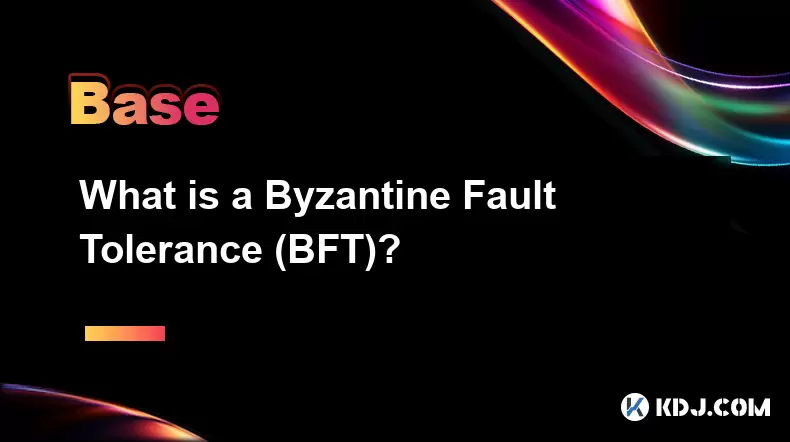-
 Bitcoin
Bitcoin $109,459.7682
2.44% -
 Ethereum
Ethereum $2,598.6052
6.29% -
 Tether USDt
Tether USDt $1.0003
0.00% -
 XRP
XRP $2.2734
3.95% -
 BNB
BNB $661.4886
1.58% -
 Solana
Solana $155.4825
4.35% -
 USDC
USDC $0.9999
-0.02% -
 TRON
TRON $0.2838
1.04% -
 Dogecoin
Dogecoin $0.1740
8.25% -
 Cardano
Cardano $0.6047
9.04% -
 Hyperliquid
Hyperliquid $40.2302
6.50% -
 Sui
Sui $2.9863
10.05% -
 Bitcoin Cash
Bitcoin Cash $509.5786
0.60% -
 Chainlink
Chainlink $13.8156
6.03% -
 UNUS SED LEO
UNUS SED LEO $9.0142
0.69% -
 Avalanche
Avalanche $19.0337
8.68% -
 Stellar
Stellar $0.2438
5.17% -
 Toncoin
Toncoin $2.9012
3.59% -
 Shiba Inu
Shiba Inu $0.0...01210
6.20% -
 Litecoin
Litecoin $90.0882
7.05% -
 Hedera
Hedera $0.1597
8.53% -
 Monero
Monero $326.3340
2.88% -
 Polkadot
Polkadot $3.6365
9.32% -
 Bitget Token
Bitget Token $4.6162
2.72% -
 Dai
Dai $1.0001
0.00% -
 Ethena USDe
Ethena USDe $1.0002
-0.01% -
 Uniswap
Uniswap $7.6403
10.47% -
 Pepe
Pepe $0.0...01060
12.03% -
 Aave
Aave $281.3664
7.56% -
 Pi
Pi $0.4992
1.76%
What is MACD Indicator?
MACD, a trend-following momentum indicator, helps crypto traders identify buy/sell signals using line crossovers, divergence, and histogram analysis.
Apr 08, 2025 at 02:00 am

The MACD (Moving Average Convergence Divergence) indicator is a popular tool used by traders in the cryptocurrency market to identify potential buy and sell signals. Developed by Gerald Appel in the late 1970s, the MACD is a trend-following momentum indicator that shows the relationship between two moving averages of a cryptocurrency's price. By understanding how to interpret and use the MACD, traders can make more informed decisions about when to enter or exit trades.
Components of the MACD Indicator
The MACD indicator consists of three main components: the MACD line, the signal line, and the histogram.
MACD Line: This is calculated by subtracting the 26-period Exponential Moving Average (EMA) from the 12-period EMA. The formula is: MACD Line = 12-period EMA - 26-period EMA. The MACD line represents the difference between the short-term and long-term moving averages, providing insight into the momentum of the price movement.
Signal Line: This is a 9-period EMA of the MACD line. The signal line is used to generate buy and sell signals when it crosses the MACD line. The formula is: Signal Line = 9-period EMA of MACD Line.
Histogram: The histogram represents the difference between the MACD line and the signal line. It is calculated as: Histogram = MACD Line - Signal Line. The histogram helps traders visualize the strength and direction of the momentum.
How to Interpret the MACD Indicator
Understanding how to interpret the MACD indicator is crucial for making effective trading decisions. Here are the key ways to read the MACD:
MACD Line and Signal Line Crossovers: When the MACD line crosses above the signal line, it is considered a bullish signal, indicating that it might be a good time to buy. Conversely, when the MACD line crosses below the signal line, it is considered a bearish signal, suggesting a potential time to sell.
Divergence: Divergence occurs when the price of a cryptocurrency moves in the opposite direction of the MACD indicator. For example, if the price is making higher highs but the MACD is making lower highs, this is a bearish divergence and could signal a potential reversal. Conversely, if the price is making lower lows but the MACD is making higher lows, this is a bullish divergence and could indicate an upcoming upward move.
Histogram Analysis: The histogram can help traders gauge the strength of the momentum. When the histogram bars are increasing in height, it indicates increasing momentum. Conversely, when the bars are decreasing in height, it suggests weakening momentum. Traders often look for the histogram to cross the zero line as a confirmation of a trend change.
Using the MACD Indicator in Cryptocurrency Trading
Incorporating the MACD indicator into your cryptocurrency trading strategy can enhance your ability to identify potential entry and exit points. Here are some practical ways to use the MACD in your trading:
Identifying Trend Reversals: By monitoring the MACD line and signal line crossovers, traders can identify potential trend reversals. For instance, if the MACD line crosses above the signal line after a downtrend, it could signal the start of an uptrend, prompting a buy decision.
Confirming Breakouts: The MACD can be used to confirm breakouts from key levels of support or resistance. If the price breaks above a resistance level and the MACD line crosses above the signal line, it can provide additional confirmation of the breakout's validity.
Filtering Trades: Traders can use the MACD to filter out less promising trades. For example, if the MACD is showing a strong bullish signal but the histogram is decreasing, it might suggest that the momentum is waning, and it could be prudent to wait for a more robust signal.
Setting Up the MACD Indicator on Trading Platforms
To start using the MACD indicator, you need to set it up on your trading platform. Here’s how to do it on some popular platforms:
Binance:
- Log into your Binance account and navigate to the trading section.
- Select the cryptocurrency pair you want to trade.
- Click on the "Indicators" button on the chart.
- Search for "MACD" and select it.
- Adjust the settings if needed (default settings are usually 12, 26, and 9 for the EMAs).
- Click "Apply" to add the MACD to your chart.
Coinbase Pro:
- Log into your Coinbase Pro account and go to the trading section.
- Choose the cryptocurrency pair you want to analyze.
- Click on the "Indicators" icon on the chart.
- Select "MACD" from the list of available indicators.
- Customize the settings if necessary (default settings are 12, 26, and 9).
- Click "Save" to add the MACD to your chart.
TradingView:
- Log into your TradingView account and open a chart for the cryptocurrency you want to analyze.
- Click on the "Indicators" button at the top of the chart.
- Type "MACD" in the search bar and select the MACD indicator.
- Adjust the settings as needed (default settings are 12, 26, and 9).
- Click "Add to Chart" to apply the MACD indicator.
Common Mistakes to Avoid When Using the MACD Indicator
While the MACD indicator can be a powerful tool, there are common pitfalls that traders should be aware of to maximize its effectiveness:
Over-reliance on Crossovers: Relying solely on MACD line and signal line crossovers can lead to false signals, especially in choppy or sideways markets. It's important to use other indicators and analysis methods to confirm signals.
Ignoring Divergence: Failing to recognize divergence can result in missed opportunities or entering trades at the wrong time. Always check for divergence between the price and the MACD to get a more complete picture of the market.
Neglecting the Histogram: The histogram provides valuable information about the momentum's strength. Ignoring it can lead to misinterpreting the overall trend and momentum.
Using Default Settings Without Adjustment: While the default settings of 12, 26, and 9 are widely used, they may not be optimal for all cryptocurrencies or timeframes. Experimenting with different settings can help tailor the MACD to your specific trading needs.
Frequently Asked Questions
Q: Can the MACD indicator be used for all cryptocurrencies?
A: Yes, the MACD indicator can be used for all cryptocurrencies. However, the effectiveness of the indicator may vary depending on the volatility and trading volume of the specific cryptocurrency. It's important to test the MACD on different cryptocurrencies and timeframes to find the most suitable settings.
Q: How often should I check the MACD indicator?
A: The frequency of checking the MACD indicator depends on your trading style. For day traders, checking the MACD multiple times throughout the day can be beneficial. For swing traders or long-term investors, checking the MACD on a daily or weekly basis may be sufficient. It's crucial to align the frequency of checking the indicator with your trading strategy and time commitment.
Q: Is the MACD indicator suitable for beginners?
A: The MACD indicator can be suitable for beginners, but it requires a basic understanding of how it works and how to interpret its signals. Beginners should start by learning the fundamentals of the MACD and practicing with a demo account before applying it to real trades. Combining the MACD with other simple indicators and analysis methods can also help beginners gain confidence in their trading decisions.
Q: Can the MACD indicator be used in conjunction with other indicators?
A: Yes, the MACD indicator is often used in conjunction with other indicators to improve the accuracy of trading signals. Common combinations include using the MACD with the Relative Strength Index (RSI) for overbought/oversold conditions, or with moving averages to confirm trends. Combining the MACD with other indicators can provide a more comprehensive view of the market and help filter out false signals.
Disclaimer:info@kdj.com
The information provided is not trading advice. kdj.com does not assume any responsibility for any investments made based on the information provided in this article. Cryptocurrencies are highly volatile and it is highly recommended that you invest with caution after thorough research!
If you believe that the content used on this website infringes your copyright, please contact us immediately (info@kdj.com) and we will delete it promptly.
- Altcoin Alert: Binance Listings and the Wild West of Crypto
- 2025-07-03 14:30:11
- Decentralized Stablecoins in 2025: Challenging Centralized Counterparts?
- 2025-07-03 14:30:11
- Meme Coin Mania: Is BTC Bull the Next Big Thing in a Limited Time BTC Bull Run?
- 2025-07-03 12:30:11
- Bitcoin Soars to $109,000: What's Fueling the Crypto Rally?
- 2025-07-03 10:30:13
- Hong Kong: Racing to Be the World's Tokenization Hub
- 2025-07-03 14:50:11
- Splatterhouse Rocks Retro Scene: A UK Magazine Deep Dive
- 2025-07-03 12:30:11
Related knowledge

What is open interest in derivatives?
Jul 03,2025 at 02:49pm
Understanding Open Interest in DerivativesOpen interest is a critical metric used in the cryptocurrency derivatives market, particularly when analyzing futures and options contracts. It represents the total number of outstanding contracts that have not been settled or closed by either party involved. Unlike trading volume, which counts all trades made i...

What is a liquidation cascade?
Jul 03,2025 at 07:15am
Understanding the Concept of LiquidationIn the realm of cryptocurrency trading, liquidation refers to the process by which a trader's position is automatically closed due to insufficient funds to maintain the leveraged trade. This typically occurs when the market moves against the trader's position and their account equity falls below the required maint...

What is a hard fork coordinator?
Jul 03,2025 at 12:42pm
Understanding the Role of a Hard Fork CoordinatorIn the world of blockchain and cryptocurrencies, a hard fork coordinator plays a critical role during major network upgrades. A hard fork is a significant change to a blockchain’s protocol that makes previously invalid blocks or transactions valid (or vice versa). This type of upgrade requires all nodes o...

What is a Byzantine Fault Tolerance (BFT)?
Jul 03,2025 at 11:49am
Understanding the Concept of Byzantine Fault ToleranceByzantine Fault Tolerance (BFT) is a critical concept in distributed systems, particularly within the realm of blockchain technology and cryptocurrencies. It refers to the ability of a system to continue functioning correctly even when some components fail or behave maliciously. The term originates f...

What is a subDAO?
Jul 03,2025 at 09:36am
Understanding the Concept of SubDAOA SubDAO, short for Sub-Decentralized Autonomous Organization, is a specialized entity that operates under the umbrella of a larger DAO (Decentralized Autonomous Organization). It functions with its own set of rules, governance mechanisms, and tokenomics while remaining aligned with the overarching goals of the parent ...

What is the Travel Rule in crypto?
Jul 03,2025 at 10:28am
Understanding the Travel Rule in CryptocurrencyThe Travel Rule is a regulatory requirement initially introduced by the Financial Action Task Force (FATF) for traditional financial institutions. It has since been extended to cryptocurrency transactions, especially those involving Virtual Asset Service Providers (VASPs). The core purpose of this rule is t...

What is open interest in derivatives?
Jul 03,2025 at 02:49pm
Understanding Open Interest in DerivativesOpen interest is a critical metric used in the cryptocurrency derivatives market, particularly when analyzing futures and options contracts. It represents the total number of outstanding contracts that have not been settled or closed by either party involved. Unlike trading volume, which counts all trades made i...

What is a liquidation cascade?
Jul 03,2025 at 07:15am
Understanding the Concept of LiquidationIn the realm of cryptocurrency trading, liquidation refers to the process by which a trader's position is automatically closed due to insufficient funds to maintain the leveraged trade. This typically occurs when the market moves against the trader's position and their account equity falls below the required maint...

What is a hard fork coordinator?
Jul 03,2025 at 12:42pm
Understanding the Role of a Hard Fork CoordinatorIn the world of blockchain and cryptocurrencies, a hard fork coordinator plays a critical role during major network upgrades. A hard fork is a significant change to a blockchain’s protocol that makes previously invalid blocks or transactions valid (or vice versa). This type of upgrade requires all nodes o...

What is a Byzantine Fault Tolerance (BFT)?
Jul 03,2025 at 11:49am
Understanding the Concept of Byzantine Fault ToleranceByzantine Fault Tolerance (BFT) is a critical concept in distributed systems, particularly within the realm of blockchain technology and cryptocurrencies. It refers to the ability of a system to continue functioning correctly even when some components fail or behave maliciously. The term originates f...

What is a subDAO?
Jul 03,2025 at 09:36am
Understanding the Concept of SubDAOA SubDAO, short for Sub-Decentralized Autonomous Organization, is a specialized entity that operates under the umbrella of a larger DAO (Decentralized Autonomous Organization). It functions with its own set of rules, governance mechanisms, and tokenomics while remaining aligned with the overarching goals of the parent ...

What is the Travel Rule in crypto?
Jul 03,2025 at 10:28am
Understanding the Travel Rule in CryptocurrencyThe Travel Rule is a regulatory requirement initially introduced by the Financial Action Task Force (FATF) for traditional financial institutions. It has since been extended to cryptocurrency transactions, especially those involving Virtual Asset Service Providers (VASPs). The core purpose of this rule is t...
See all articles

























































































